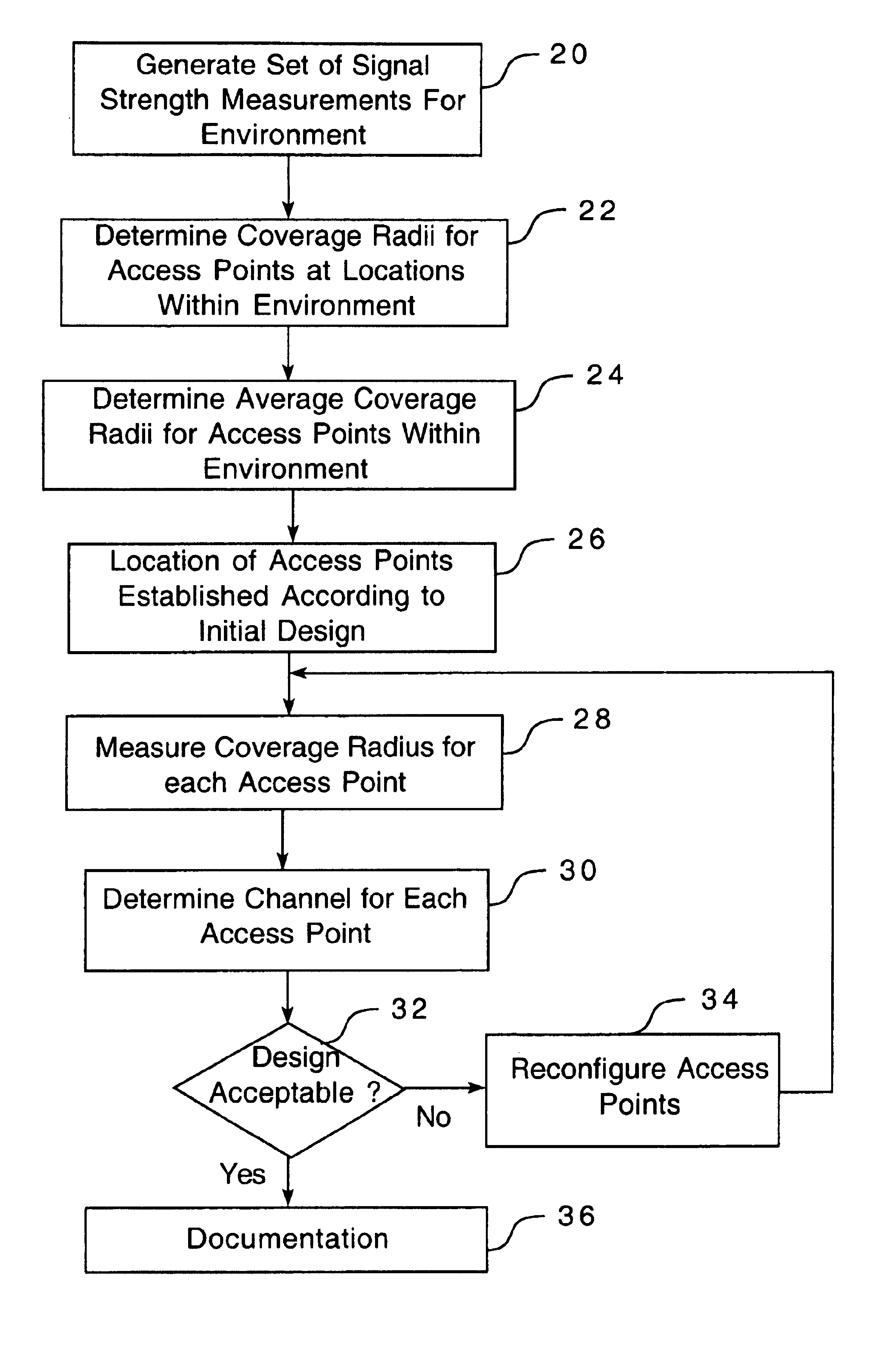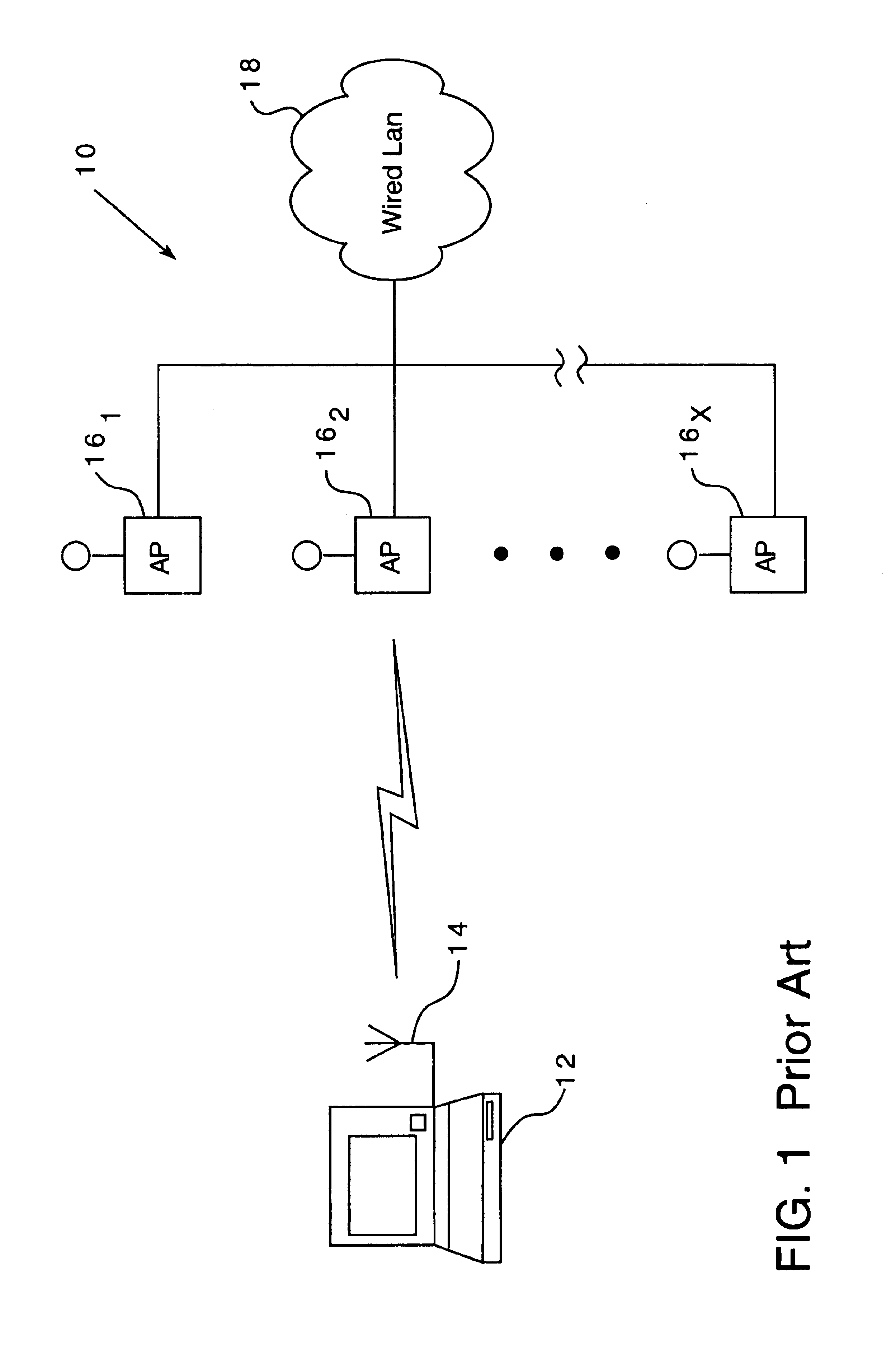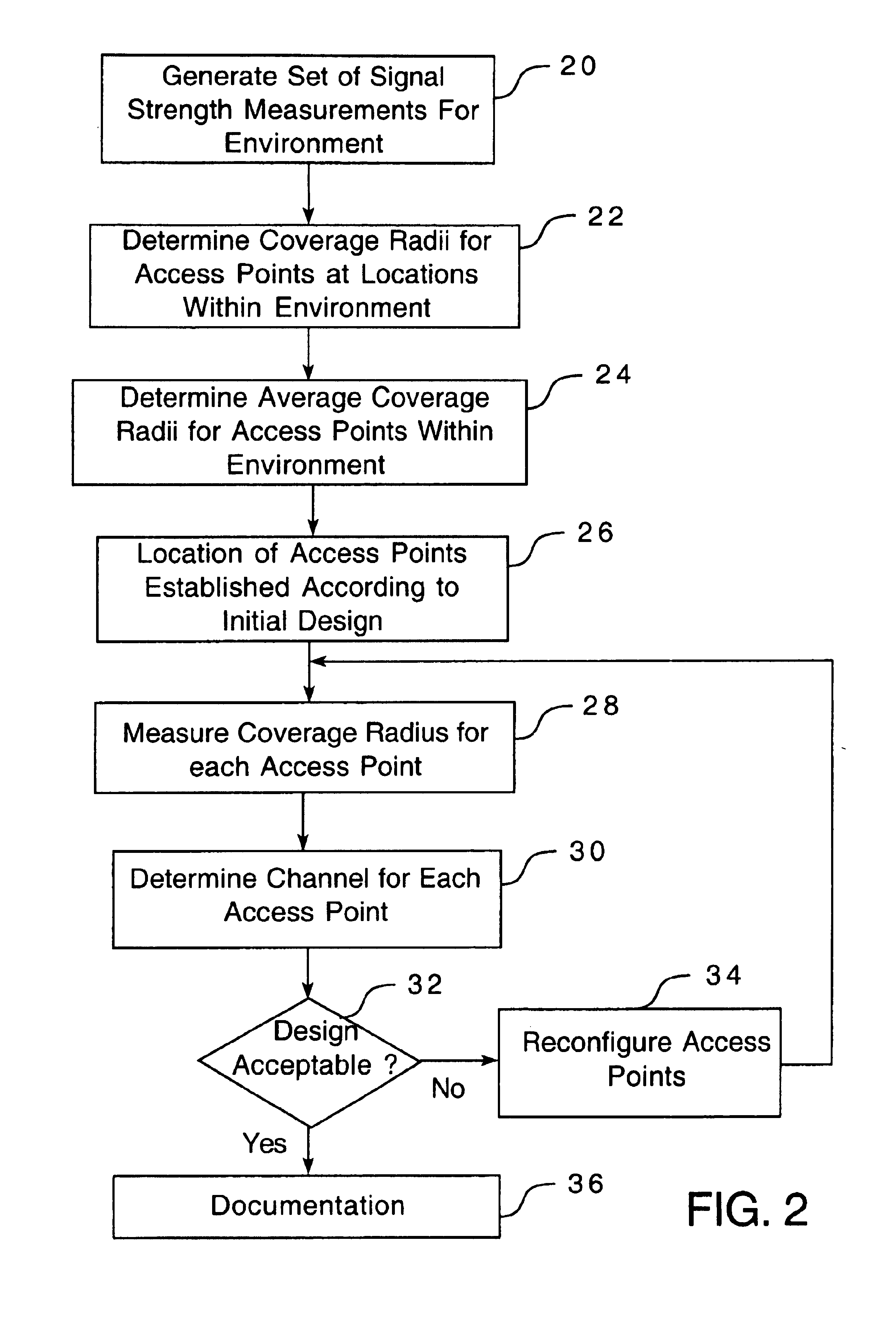Method for configuring a wireless network
- Summary
- Abstract
- Description
- Claims
- Application Information
AI Technical Summary
Benefits of technology
Problems solved by technology
Method used
Image
Examples
example 2
FIGS. 5 and 6 illustrate another embodiment of the present invention, in which a wireless network is to be implemented to provide wireless coverage for a number of contiguous floors of a multi-floor building 50 where the width of the floors is no greater than R2. According to one embodiment, as illustrated in FIG. 5, a first AP 16, may be placed on a second floor of the contiguous floors of the building 50 at the intersection of an edge of the building 50 and the line B-B' bisecting the building 50 lengthwise. The position of the first AP 16.sub.1 may be adjusted such as, for example, by moving the first AP 16.sub.1 along the bisecting line B-B' such that the coverage area of the first AP 16.sub.1 on a first floor of the building 50 immediately below the second floor, having an approximate coverage radius of R', extends to two corners (A, A') of the building on the first floor. It should be noted that the reference here and elsewhere to "first" and "second" floors does not necessari...
example 3
FIGS. 7-10 illustrate another embodiment of the present invention, in which a wireless network is implemented on one floor of a building 50 whose width is greater than R2. The described method for establishing the location of the APs 16 may be followed, for example, where the building 50 has one story, where only one floor of a multi-floor building 50 requires wireless coverage, or where certain floors of a multi-floor building are to be treated separately.
According to one embodiment, as illustrated in FIG. 7, a first AP 16, may be located at the distance R from a corner A of the building 50 along a line extending from the corner, such as on a 45.degree. angle. The location of the first AP 16.sub.1 may be adjusted such that its coverage area extends to the corner of the building 50. According to one embodiment, the position of the first AP 16.sub.1 may be adjusted by moving the first AP 16.sub.1 along the line extending 45.degree. from the corner A of the building 50.
As illustrated ...
example 4
FIGS. 11--15 illustrate another embodiment of the present invention, in which a wireless network is to be implemented on first and second contiguous floors of a building 50 where the width of the floors is greater than R2. As discussed hereinbefore, the reference to "first" and "second" floor does not necessarily refer to the first and second floors of the building, but rather any two floors of a multi-floor building.
According to one embodiment, as illustrated in FIG. 11, a first AP 16.sub.1 may be located at a corner A of the building 50 on the second floor. A second AP 16.sub.2 may be located on the first floor at the distance D' from the corner of the building 50 along a line extending from the corner A, such as on a 45.degree. angle. The locations of the first and second APs 16.sub.1,2 may be adjusted to assure that the edges of the coverage areas on the first floor intersect at two sides of the building 50. In the illustrated embodiment, the coverage areas of the APs 16 for the...
PUM
 Login to View More
Login to View More Abstract
Description
Claims
Application Information
 Login to View More
Login to View More - R&D
- Intellectual Property
- Life Sciences
- Materials
- Tech Scout
- Unparalleled Data Quality
- Higher Quality Content
- 60% Fewer Hallucinations
Browse by: Latest US Patents, China's latest patents, Technical Efficacy Thesaurus, Application Domain, Technology Topic, Popular Technical Reports.
© 2025 PatSnap. All rights reserved.Legal|Privacy policy|Modern Slavery Act Transparency Statement|Sitemap|About US| Contact US: help@patsnap.com



